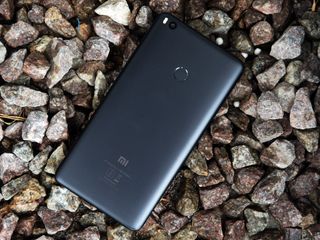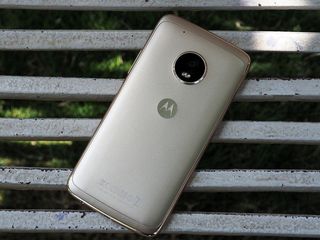The state of Android updates in India: Nougat edition

Android continues to dominate in India, commanding a market share in excess of 97%. With India now the second-largest smartphone market in the world, that means a lot of phones running Android.
However, most of those devices aren't on the latest version of Android, with manufacturers unwilling to commit engineering resources to continually update their products. For what it's worth, the situation is better than last year, but there's a lot of work left to be done.
To preserve my sanity, I've focused on phones that launched in India after October 2016. Here's a look at where things stand when it comes to platform updates in the country.
Samsung

Samsung continues to dominate the Indian handset market, with the Galaxy S8 and S8+ doing remarkably well in the country. Both phones came with Android 7.0 Nougat out of the box, and continue to receive timely security patches — Samsung rolled out the July 1, 2017 patch a few weeks ago.
However, Samsung hasn't fared well when it comes to delivering the Nougat update to its mid-range devices. That wasn't the case last year, but this time around, the Galaxy A5 2017, A7 2017, and the A9 Pro are still running Marshmallow. The Galaxy C7 Pro is also on Android 6.0.1 Marshmallow, and there's no mention of a Nougat update for the C9 Pro — Samsung's first phone in India with 6GB of RAM — either.
Samsung has launched phones running Nougat, Marshmallow, and Lollipop — all in 2017.
More recent launches in the Galaxy J series — the Galaxy J7 Nxt — come with Android 7.0 Nougat out of the box. But for every Galaxy J7 Nxt, there's a Galaxy J3 Pro, which launched in May 2017 running Android 5.1 Lollipop. Samsung loves to recycle older devices in India, and that's how we ended up with a device in May 2017 running a version of Android that's two years old. Considering the device is aimed at the entry-level segment, it's unlikely it will ever see an update.
The Galaxy J7 Pro and J7 Max, which debuted in India last month, thankfully run Nougat. The J7 Pro is particularly interesting as it is the first budget phone from Samsung to offer Samsung Pay. The Galaxy On Max — another device aimed at the budget category — is also running Nougat.
Be an expert in 5 minutes
Get the latest news from Android Central, your trusted companion in the world of Android
Xiaomi

Xiaomi saw a drastic shift in its fortunes in the Indian market over the last twelve months, with the brand now the fastest-growing smartphone vendor in the country. Xiaomi's always been great at rolling out products that offer great value for money, and it used that strategy to great effect with the Redmi 3S in the entry-level segment, the Redmi Note 4 in the budget category, and more recently the Redmi 4.
It's no coincidence, then, that the Redmi Note 4 and the Redmi 4 are two of the best-selling phones in the country this year. With the Mi Max 2 making its debut earlier this month, Xiaomi has a wealth of options in the sub-₹20,000 segment. Unfortunately, only two products from the manufacturer — the Mi Max 2 and the Mi 5 — currently run Nougat.
At the Redmi Note 4 launch, Xiaomi announced a beta Nougat build for the device, and six months later, there's no mention of a stable build. There's no mention of when the Redmi 3S, Redmi 4, and the Redmi 4A will make the switch to Nougat.
Xiaomi has just two phones running Nougat.
Xiaomi unveiled MIUI 9 in China last week, with the beta test for the ROM slated to kick off from August 11. That's for the Chinese version of the ROM, and there's no word yet on when the global ROM will become available.
It's likely that Xiaomi will deliver the Nougat update directly with MIUI 9, but that means an agonizing wait of at least a few months for the likes of the Redmi 3S and Redmi 4A. The manufacturer has confirmed that 15 devices will receive the Nougat update, with testing underway for five devices — Redmi 4, Mi Note 2, Mi Mix, Mi 5s, and the Mi 5s Plus.
Only one of those devices made it to India, so it'll likely be a while before the rest of Xiaomi's portfolio gets updated to Nougat.
Motorola/Lenovo

Following its rebirth under Google, Motorola has led the way for software updates. The brand continues to be the first to deliver platform updates to its phones, and while there have been a few missteps along the way, particularly in the U.S., Motorola has a strong track record in India.
A key change in strategy for Motorola this year is the expansion of its portfolio. Lenovo is increasingly leveraging the Motorola brand name to boost global sales, and to that effect we've seen the introduction of several new devices in recent months. These are the phones Motorola launched in India over the last nine months:
- Moto E4 Plus
- Moto E4
- Moto C
- Moto C Plus
- Moto Z2 Play
- Moto G5
- Moto G5 Plus
- Moto M
- Moto Z
- Moto Z Play
Moto E4, E4 Plus, and the Z2 Play run Android 7.1.1 Nougat out of the box, while the Moto C, C Plus, G5, and G5 Plus are on Android 7.0 Nougat. Motorola started seeding the Nougat update to the Moto M earlier this month, while the Moto Z and Z Play picked up the update earlier this year.
Most of last year's phones have also been updated to Nougat, with the exception of the Moto E3 Power. Motorola
Motorola is a shining light in a sea of indifference.
Over the last two years, I convinced everyone in my family to switch to Motorola devices. The reasoning was simple: their use case included a lot of calls, WhatsApp usage bordering on addiction, and taking a few images. For that, the Moto G series fit the bill very well, and starting with the Moto G4 Plus, the camera was actually usable.
Aside from a few overheating issues with the Moto G4 Plus and intermittent performance drawbacks with the Moto X Play, I didn't have to do a whole lot of troubleshooting, and that alone makes recommending Motorola phones worthwhile.
Only time will tell if Motorola can manage to deliver timely updates considering the recent additions to its roster, but for what it's worth, the Moto G5 Plus continues to be one of the best phones in the budget segment.
Lenovo launched just four phones in the country in the last nine months — the Lenovo Z2 Plus, K6 Note, K6 Power, and the P2 — and all four phones have picked up the Nougat update. Now that Motorola is shouldering most of the burden in the handset segment, Lenovo has had an easier time rolling out updates to its device.
Vivo and OPPO

While Xiaomi focused its attention on the online segment, OPPO and Vivo turned to the retail segment. Both companies launched an ad blitz in the country, and it's now at a stage where you cannot go over 100 feet in a major city without coming across Vivo or OPPO signage.
The aggressive marketing efforts have paid off — both brands are selling millions of devices in India. Their online presence is limited, but with a nationwide retail network numbering in the thousands, it doesn't look like either brand is keen on the online space. The strategy has worked magnificently — seven out of ten phones are still bought at offline stores.
As both brands rely on offline sales, their phones command a higher premium when seen against the likes of Xiaomi. The phones also don't offer as much value for money, and come with heavily-skinned versions of Android — OPPO's skin is called ColorOS, while Vivo's ROM is Funtouch.
Don't hold out for the Nougat update if you're using an OPPO or Vivo phone.
Vivo introduced seven phones in India this year — the Y53, Y55S, Y66, V5, V5 Plus, a special edition of the V5 Plus, and the V5s. ALl seven models run Funtouch OS 3.0 atop Android 6.0 Marshmallow, and while the manufacturer recently unveiled a Nougat-based build of Funtouch in China, there's no telling when it will roll out to its Indian portfolio.
Given Vivo's history, it isn't going to be anytime soon. Last year's V3 launched with Lollipop, and it's yet to make the switch to Marshmallow.
OPPO has launched four phones in India over the last nine months — a special variant of the F1s called the F1s Diwali, A57, F3, and the F3 Plus. The F1s Diwali runs ColorOS 3.0 that's based on Android 5.1 Lollipop, while the other three devices offer ColorOS 3.0 atop Android 6.0 Marshmallow. It doesn't look like OPPO is in a hurry to deliver the Nougat update either.
Indian manufacturers

Over the course of the last twelve months, local vendors like Micromax, Lava, and Intex decided it would be more fun to give way to their Chinese counterparts, who now effectively control the Indian handset market. As a result, local brands have shifted focus to the offline sector, where they can eke out sales by partnering with retail stores.
Out of the dozens of largely-forgettable phones Micromax currently sells, only three devices — the Selfie 2, Canvas 1, and Canvas 2 — run Nougat. And as far as I can make out, there isn't a single Lava Mobiles phone that offers Nougat.
Intex fares much better in this regard. Out of the 20 phones the manufacturer is selling, eight are based on Android 7.0 Nougat:
- Aqua Lions 3{.col2}
- Aqua Power IV
- Aqua Selfie
- Aqua S3
- Aqua Zenith
- Aqua A4
- Aqua Crystal+
- Aqua Elyt-E7
Karbonn Mobiles also has four phones that are on Nougat — K9 Kavach, A40 Indian, Aura Note 2, and Aura Power 4G Plus.
Smartron is a recent entrant to this list, and the manufacturer is one of the few local vendors to focus on software as a differentiator. The brand is a Qualcomm licensee, which gives it the ability to eke out the most from the hardware, and ensure that it ties in well with the software.
Its second device, the srt.phone, is powered by the 28nm Snapdragon 652 and isn't built on the newer 14nm node — like the Snapdragon 625 — but Smartron was able to find a balance between energy efficiency and performance.
The phone runs Android 7.1.1 Nougat out of the box, and Smartron is committing to delivering security updates at least once every two months. Smartron doesn't have to worry about rolling out updates to a lot of phones, and that should make its task easier.
Your turn
That's a broad look at the state of Android updates in India. Did your phone pick up the Nougat update? Let us know in the comments below.

Harish Jonnalagadda is a Senior Editor overseeing Asia at Android Central. He leads the site's coverage of Chinese phone brands, contributing to reviews, features, and buying guides. He also writes about storage servers, audio products, and the semiconductor industry. Contact him on Twitter at @chunkynerd.
